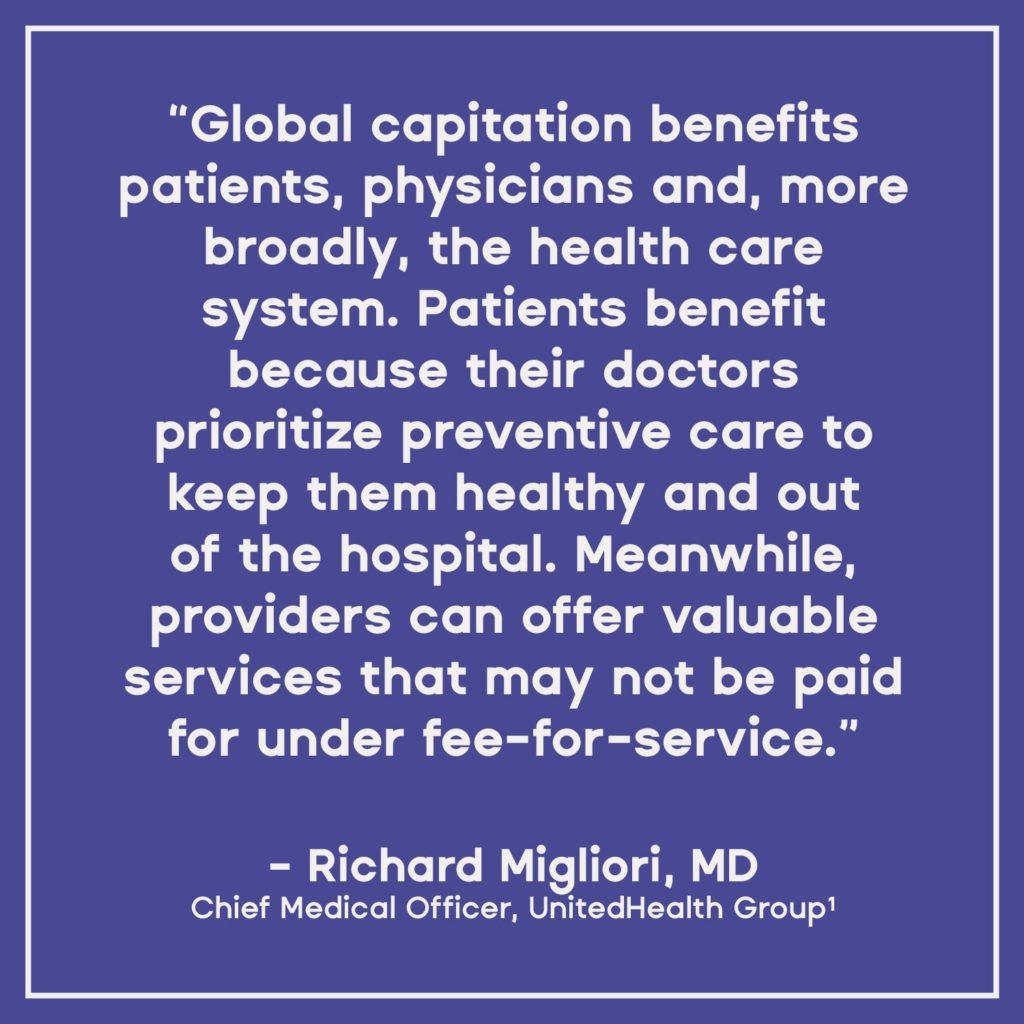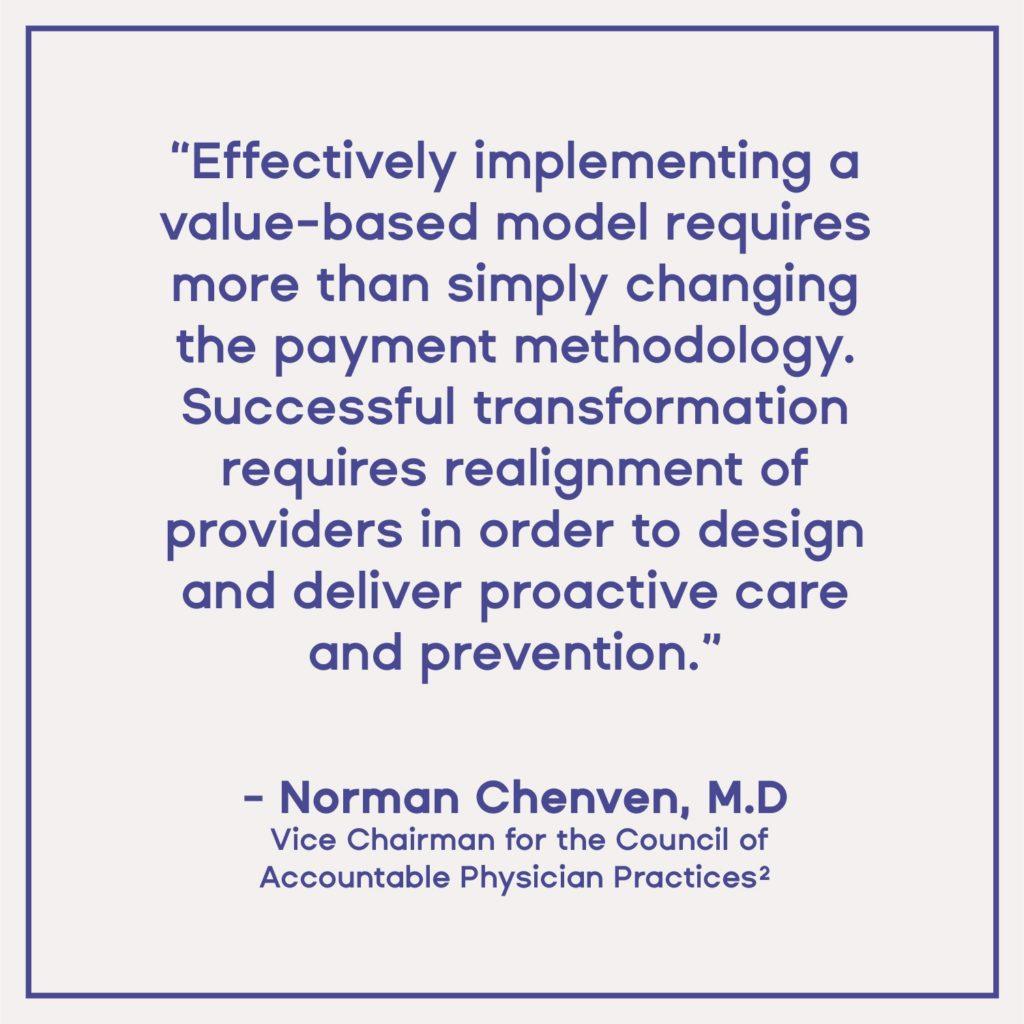The term “capitation” may bring back some bad memories for providers who have been practicing for a long time. In the 1980s, health maintenance organizations (HMOs) tried a variety of healthcare models to contain costs, some of which included capitation payment frameworks. But in each case, efforts to constrain costs in these models only served to worsen the healthcare situation, often resulting in lower quality care, as well as unhappy patients and providers. As a result, capitation models fell out of favor.
However, ever-increasing healthcare costs that have resulted in unaffordable insurance premiums and increasingly high deductibles (among other developments that have negatively impacted consumers) have led many to revisit the notion of the capitation model and the ways in which it can be more effectively deployed. Medicare and private payers alike are reconsidering the capitation model as a possible key component to addressing spending increases. In conjunction with provider risk-sharing, care protocols targeted at quality outcomes and novel technologies that engender patient engagement, the capitation model can be a helpful mechanism to free providers from the fee-for-service “hamster wheel”. As a result, many are convinced capitation can reshape healthcare for the better.
What Are Capitation Payments?
A capitation payment structure is one that gives a provider a fixed payment per patient at some regular cadence, usually monthly, as compensation for managing that patient’s care. Generally, a provider will receive the fixed amount at regular intervals based on the relevant patient population they are credited for managing (e.g., Medicare paying for all Medicare beneficiaries a Primary Care Provider (PCP) manages). This fixed amount is usually determined by historical information (e.g., claims data) and other adjustments that account for the relative healthiness or sickness of the patient panel under management. Given the backwards-looking nature of this approach, the fixed payment may at times be inadequate to pay for services rendered in any given month. Conversely, the fixed payment may also exceed costs of services rendered. The capitation model thereby incentivizes providers to reduce costs, resulting in savings retention.
Such incentives could predictably lead to situations where providers withhold services to generate a greater delta between the capitated payment and the actual cost of services rendered. However, providers who inappropriately reduce services to maximize savings will predictably find a disproportionate subset of their patients using urgent or emergent care, or even being hospitalized, leading to greater systemic costs. Therefore, successful application of the capitation model generally requires risk exposure and adherence to certain quality- and patient satisfaction benchmarks to ensure providers have appropriate incentives, such that the only way to effectively “win” is to improve the efficiency of delivering high quality care.
Newer models that employ capitated payment, including those that have recently been introduced by Medicare, have evolved to include additional goals around quality, satisfaction and outcomes. With an appropriate balance of competing priorities, the capitation model can be effective in controlling costs while freeing providers to engage their patients in ways that traditional fee-for-service payment structure disincentivize (e.g., texting a patient, which isn’t generally a billable service in fee-for-service).
What Are Current Capitation Models?
The Center for Medicare and Medicaid Services Innovation Center (CMMI) has increasingly experimented with capitated payment. In April 2021, CMMI launched its Global and Professional Direct Contracting models, in which providers can choose between a total or partial capitated payment structure as compensation for managing their traditional Medicare patients. Providers receive a fixed payment for patient care, derived from algorithms that analyze historical costs and disease burden. In the Global track, providers are then “at risk” for 100% of all healthcare costs rendered by their patient panel and receive 100% of any savings they generate, assuming they provide high-quality care. The Professional track is similar, but participating providers are only exposed to 50% of the patient risk–and only receive 50% of shavings generated, with the government retaining the remainder.
Will the Capitation Model Become the Preferred Healthcare Solution?
The capitation model has the potential to provide a number of benefits to an ailing healthcare system. It aligns the goals of providers, payers, and patients to engender higher quality care. In addition, capitated payments incentivize innovation and creativity in care delivery models, promoting better collaboration, communication, and integration of healthcare services, while placing a greater emphasis on health maintenance and prevention. Though past iterations of capitation-oriented payment structures stumbled, payers have learned from previous mistakes, and new models are showing strong potential.
1 LaPointe, J. (2021). PCPs Paid Under Global Capitation Deliver Higher Quality Care. Revcycle Intelligence. Retrieved from https://revcycleintelligence.com/news/pcps-paid-under-global-capitation-deliver-higher-quality-care
2 Staff writer. (2021). Top Challenges 2021: #8 Transitioning to value-based care models. Medical Economics. Retrieved from https://www.medicaleconomics.com/view/top-challenges-2021-8-transitioning-to-value-based-care-models




